While ginger usually enhances the flavors of dishes, it also pairs well with rice. Japanese Ginger Rice is an appetizing dish that allows you to enjoy the delightful essence of ginger.
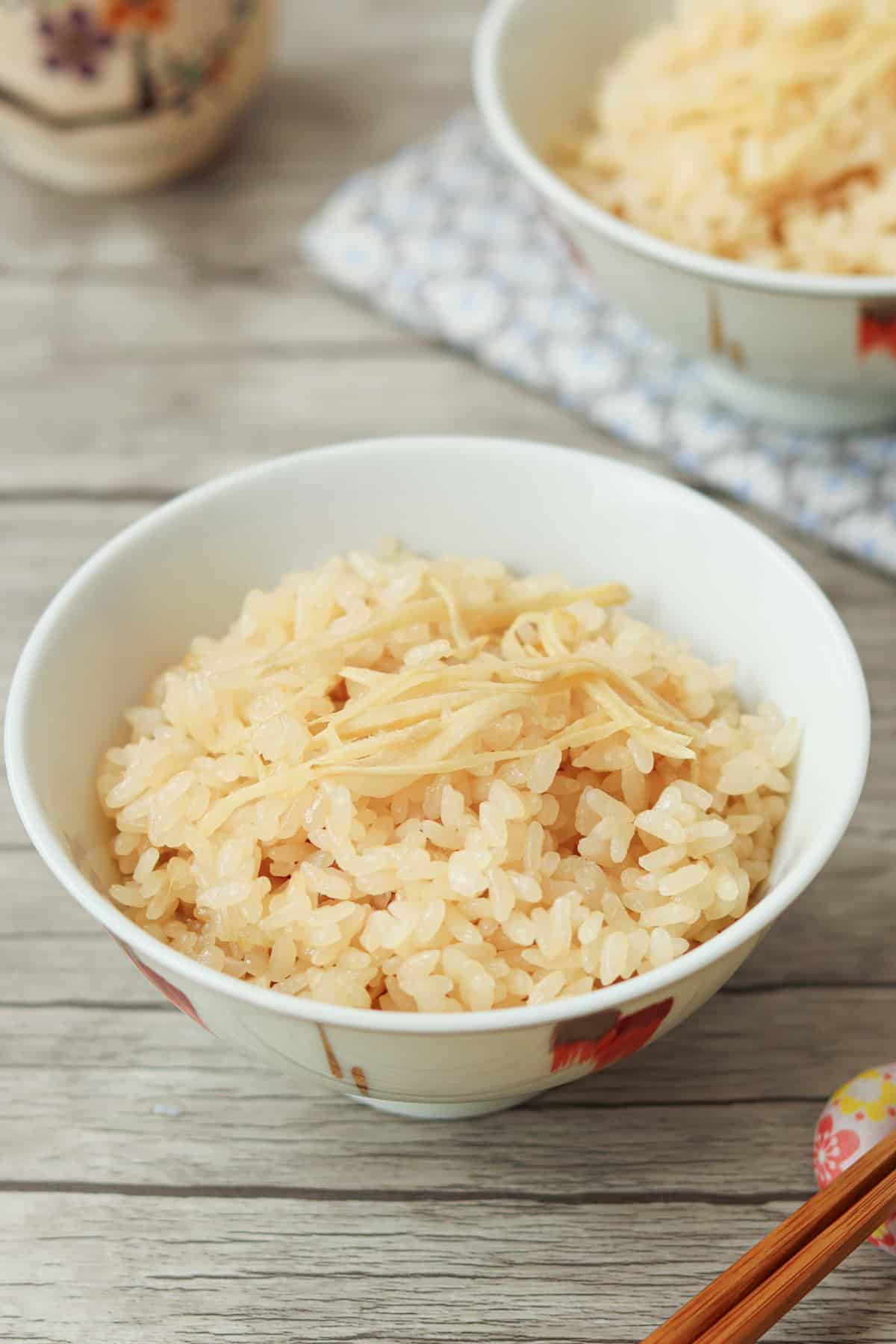
Jump to:
What is Japanese Ginger Rice?
Japanese Ginger Rice is a type of cooked rice flavored with ginger, dashi stock, and traditional Japanese seasonings. Combining rice with these ingredients creates a delightful dish that is enhanced by the distinctive flavor of ginger. Each ingredient harmonizes to deliver a well-balanced taste.
In Japan, there is a cultural tradition of cooking seasonal ingredients together with rice, and ginger rice is a popular dish enjoyed from summer to fall. The refreshing flavor of ginger is sure to stimulate your appetite more than you might expect. It offers a unique and satisfying taste experience.
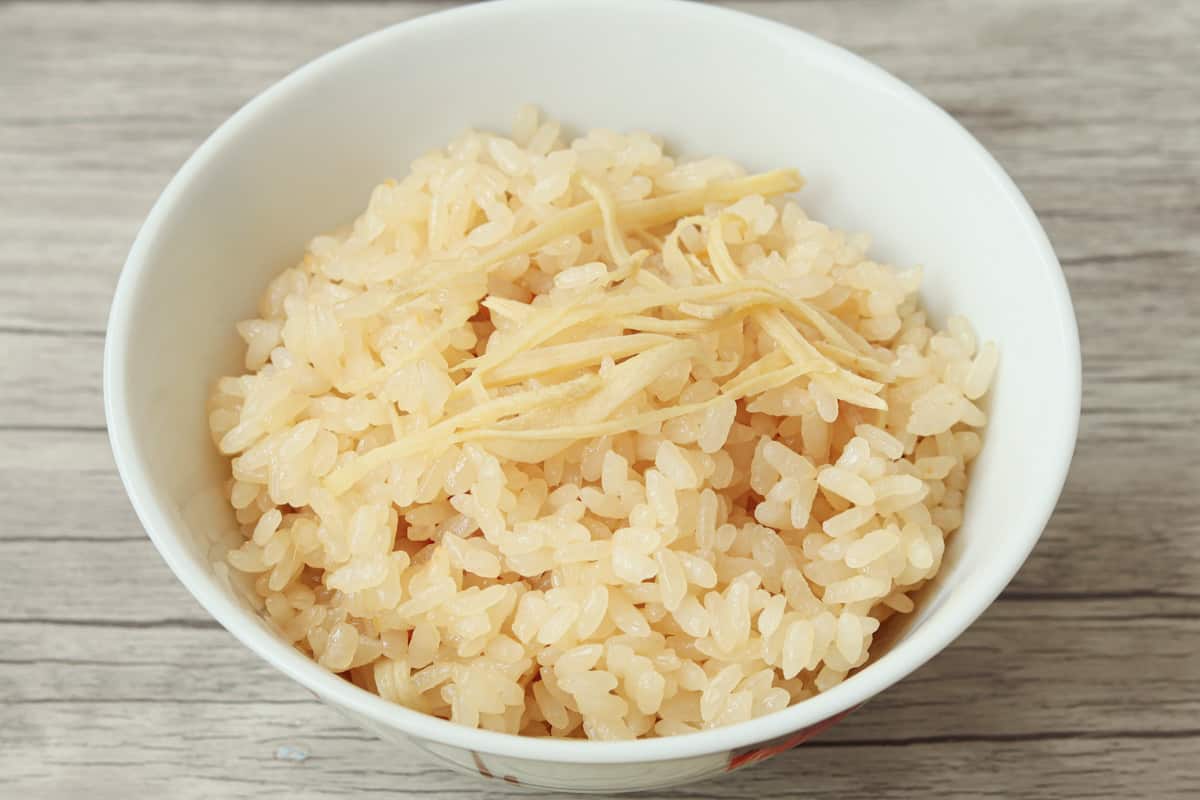
Exploring the benefits of ginger
Ginger, which is a key ingredient in this dish, is known for its health benefits and is a desirable addition to a daily diet. Its benefits include:
- Promoting blood circulation
- Improving digestion
- Aiding in fatigue recovery
- Enhancing skin health
In other words, ginger rice is an ideal way to enjoy the flavor of ginger while benefiting from its health advantages. Let's eat well and stay healthy.
Variations with aburaage
Japanese Ginger rice is mainly made with rice and ginger, but it is also common to include aburaage (deep-fried tofu sheets). By adding aburaage, you can enjoy this dish with a slightly different flavor profile.
In this recipe, I haven't included it to preserve the pure flavor of ginger, but if you are interested, feel free to add it and enjoy. If you do, be sure to finely chop it to take advantage of both its texture and flavor.
Cooking tools
The tool you need to make this dish is the same as the one used to cook regular Japanese rice: a pot or a rice cooker.
In Japan, while most households have a rice cooker, it is less common outside of Japan, so I’m sharing a recipe using a pot here. Of course, you can also use a rice cooker; in that case, simply replace the pot with the rice cooker in the recipe.
To learn more about How to Cook Japanese Rice on the Stove, please refer to the linked page.
Seasonal Japanese rice dishes
In Japan, there are many types of cooked rice dishes made with fresh, seasonal ingredients. One representative rice dish from summer to fall is ginger rice, but there are also other seasonal varieties, such as mame gohan (green pea rice), corn rice, kuri gohan (chestnut rice), satsumaimo gohan (Japanese sweet potato rice), and kaki gohan (oyster rice), all prepared according to the season.
In traditional Japanese kaiseki restaurants, it is customary to serve a rice dish made with seasonal ingredients before dessert. If you have the opportunity to try kaiseki cuisine, pay attention to the ingredients used in the rice dishes. You will surely experience the essence of the season.
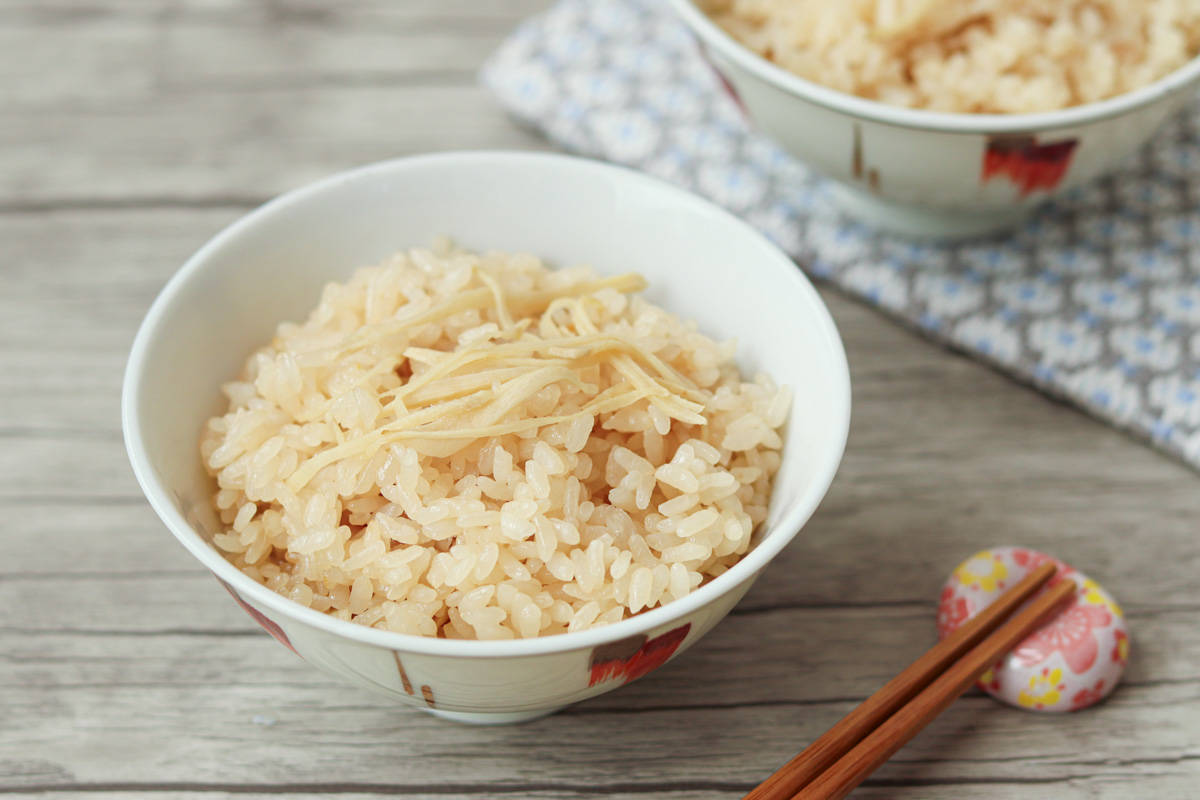
📋Step-by-step recipe
Ingredients
- ¾ cup Japanese short-grain rice (1 rice cooker cup for 2 servings)
- 1 oz ginger
- ¾ cup dashi stock (Please refer to the linked page for instructions on how to make it. For plant-based options, see the pages on kombu dashi and shiitake dashi.)
Seasonings:
- ½ Tbsp sake
- ½ Tbsp mirin
- ¼ tsp salt
- 1 Tbsp light soy sauce (You can substitute it with regular soy sauce; the main difference is the color.)
Instructions
🕒 Total: 1 hr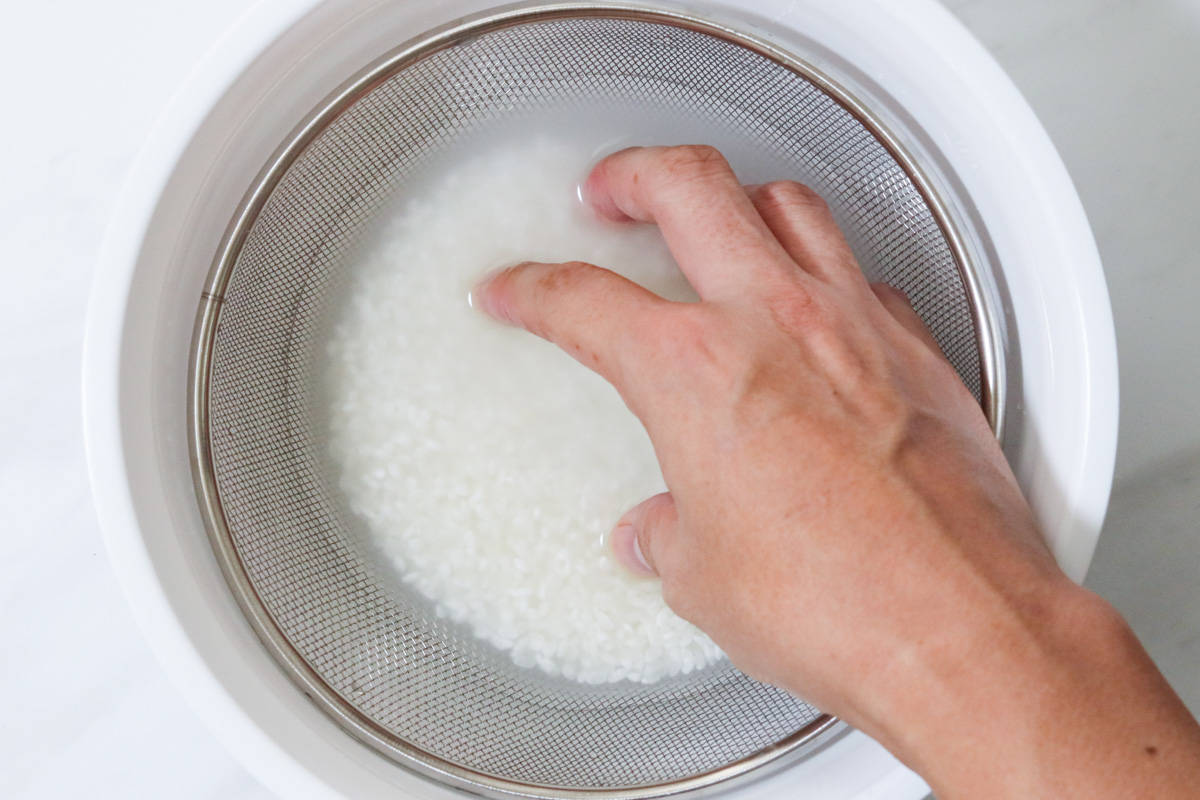
Step 1
Place a sieve over a bowl, add rice, and rinse it with water. Repeat this process several times, changing the water each time.
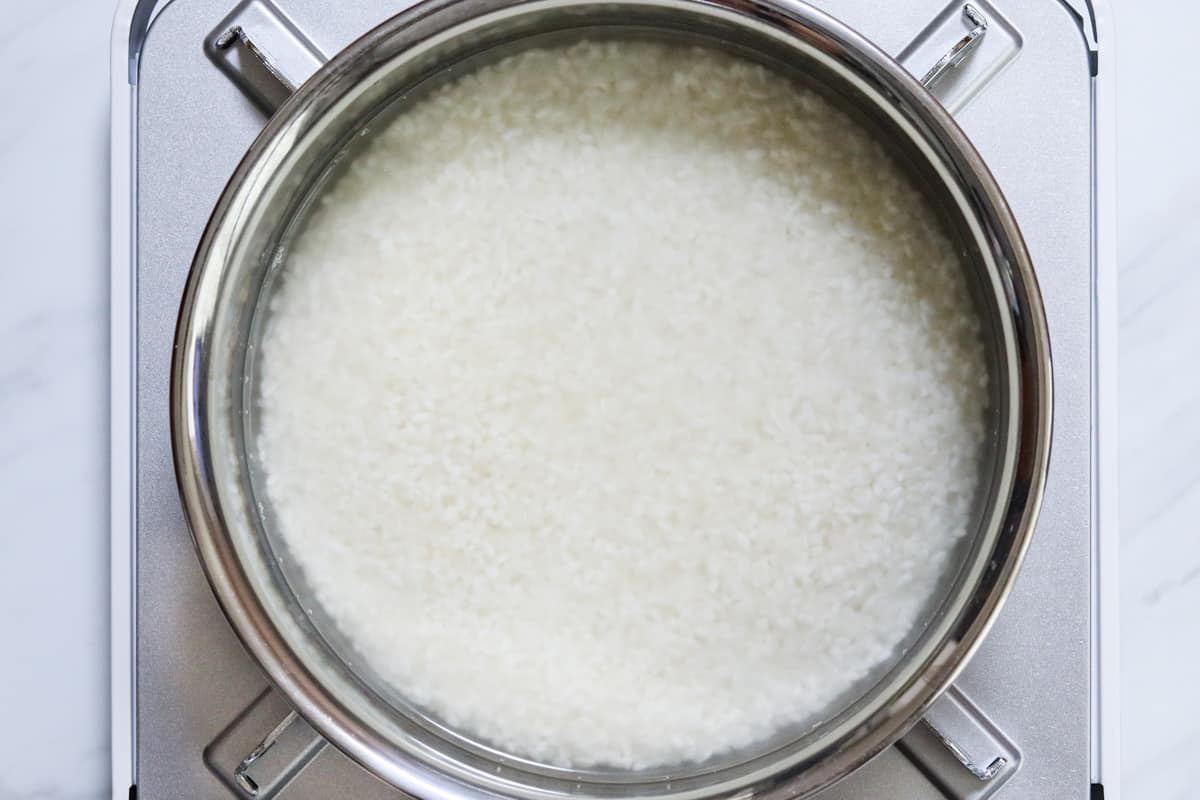
Step 2
Soak the rinsed rice in water in a pot for at least 30 minutes.
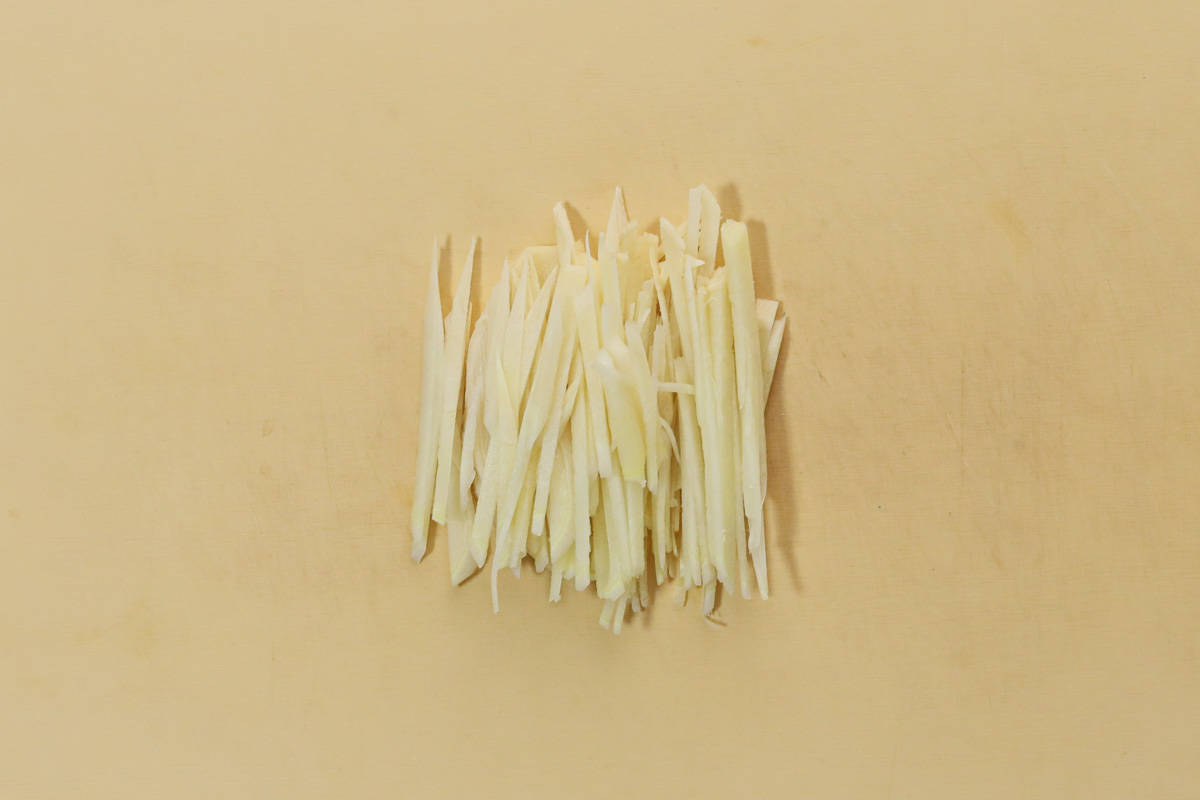
Step 3
Peel ginger and cut it into long, thin strips.
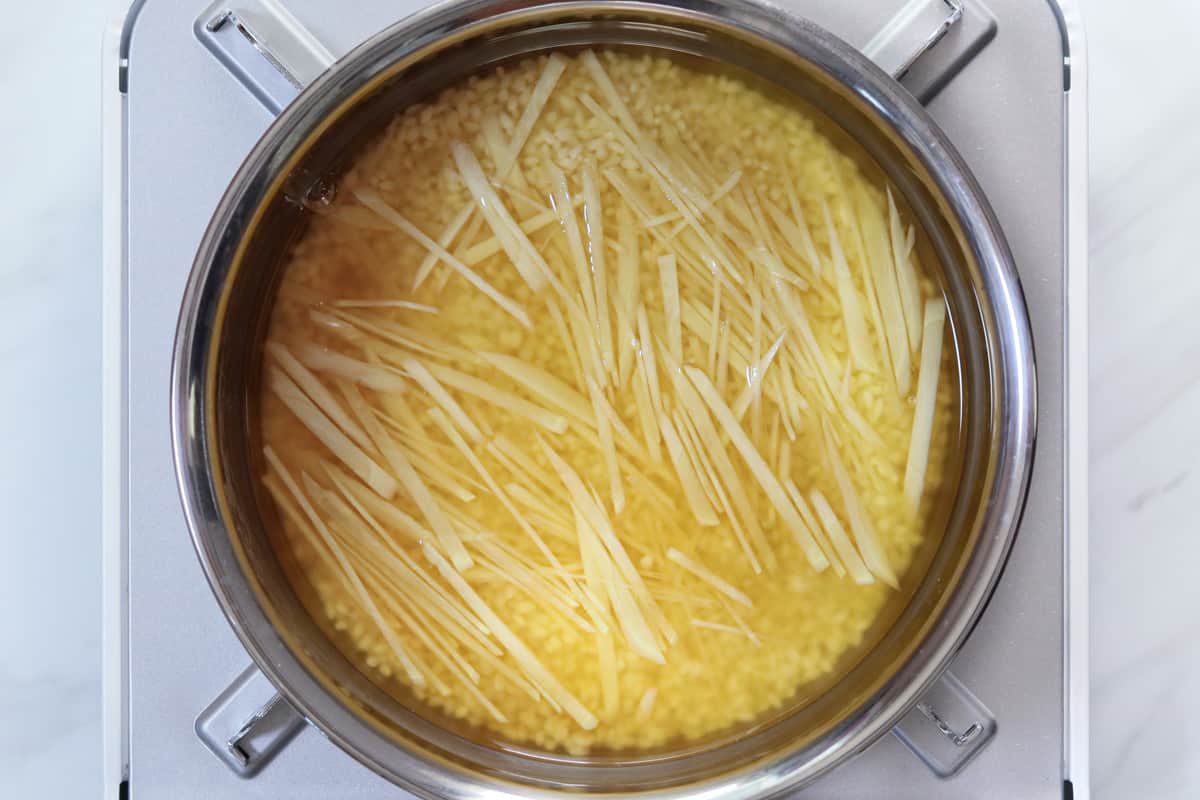
Step 4
Discard the water in which the rice was soaked from the pot. Combine the drained rice with seasonings (dashi, sake, mirin, salt, and light soy sauce) in the pot. Then, evenly distribute the shredded ginger on top.
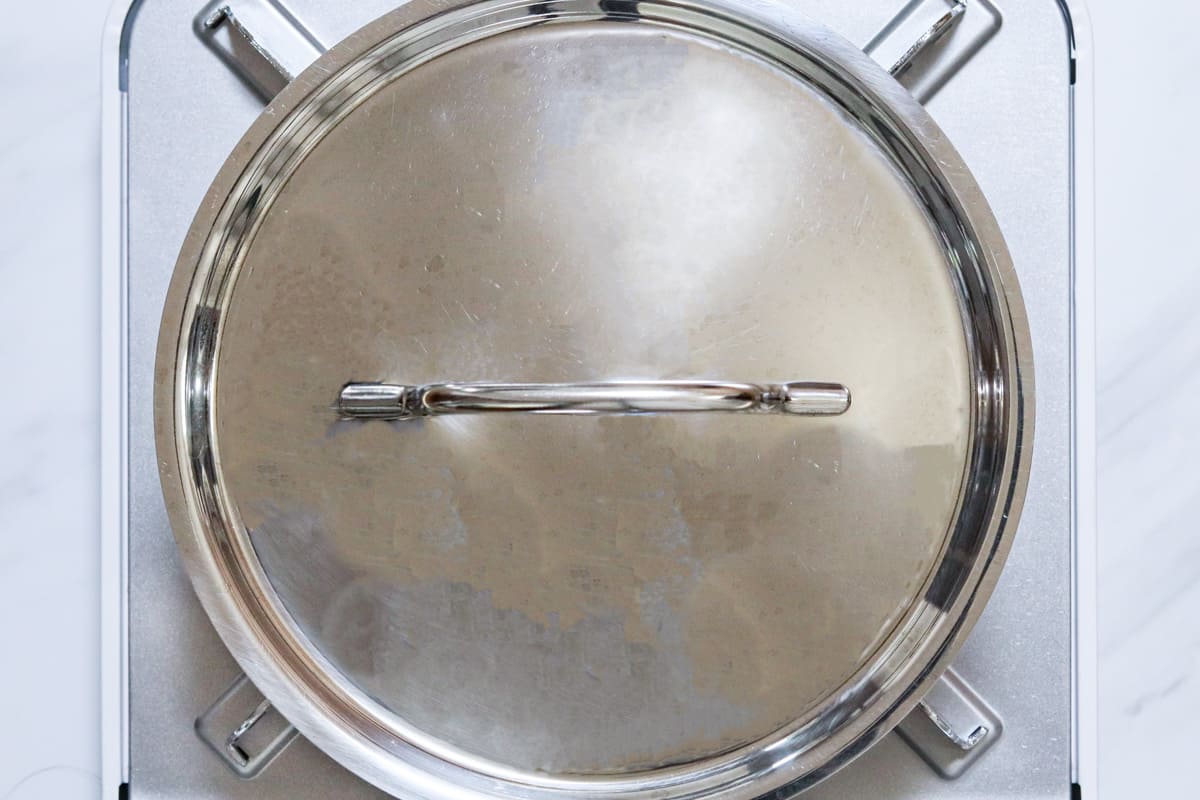
Step 5
Cover the pot and bring it to a boil. Once boiling, reduce the heat to low and continue cooking for 10 minutes, or slightly longer for larger quantities (11 minutes for 4 servings, 12 minutes for 6 servings).

Step 6
Turn off the heat and let it steam for 10 minutes with the lid still on.
To store
You can store it in the refrigerator for up to 3 days.
If you try this recipe, I’d love to hear what you think. Please consider leaving a review and star rating in the comments below. If you enjoyed it, I’d really appreciate it if you shared it with your friends.
Recipe card
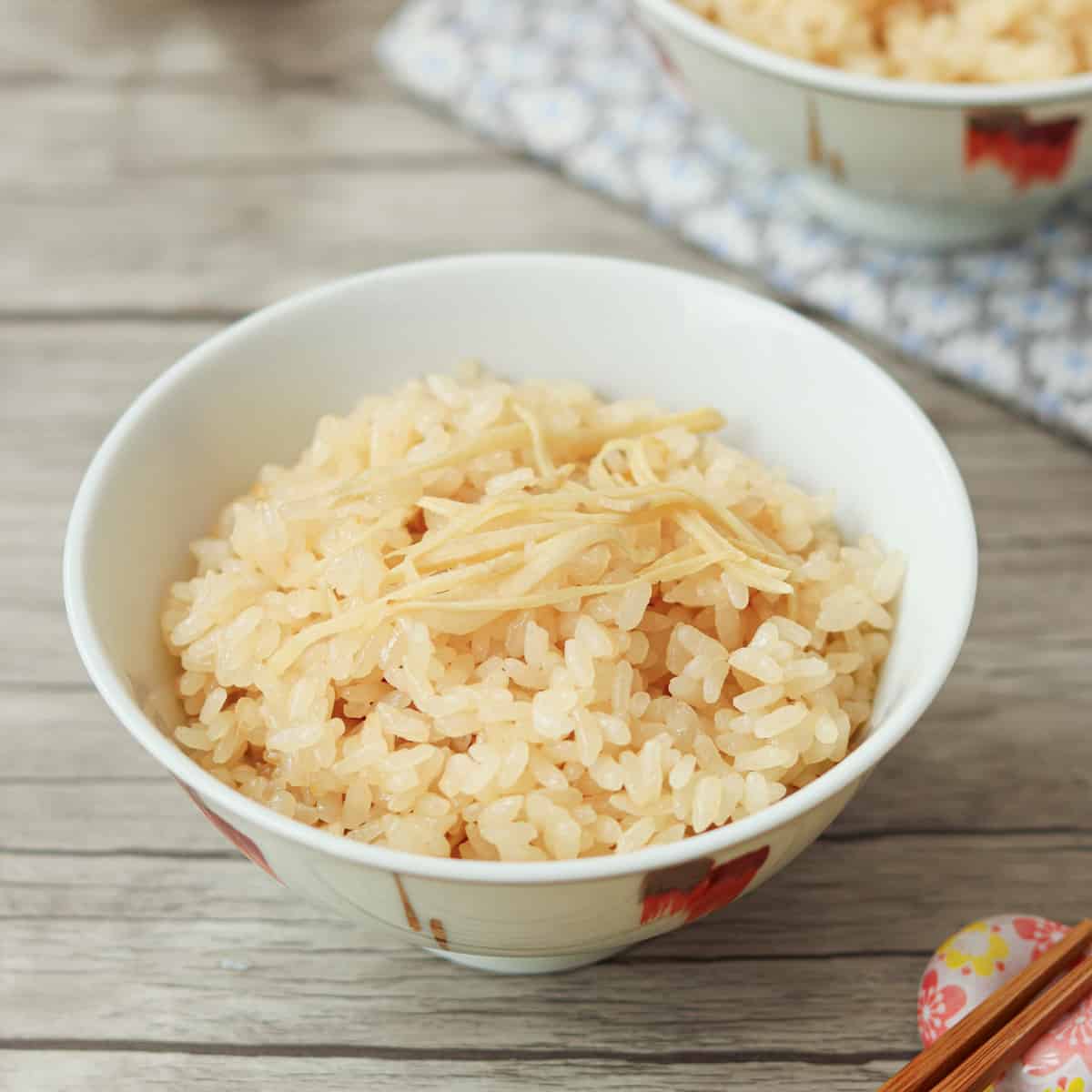
Japanese Ginger Rice
Ingredients
- ¾ cup Japanese short-grain rice (1 rice cooker cup for 2 servings)
- 1 oz ginger
- ¾ cup dashi stock (Please refer to the linked page for instructions on how to make it. For plant-based options, see the pages on kombu dashi and shiitake dashi.)
Seasonings:
- ½ Tbsp sake
- ½ Tbsp mirin
- ¼ tsp salt
- 1 Tbsp light soy sauce (You can substitute it with regular soy sauce; the main difference is the color.)
Instructions
- Place a sieve over a bowl, add rice, and rinse it with water. Repeat this process several times, changing the water each time.
- Soak the rinsed rice in water in a pot for at least 30 minutes.
- Peel ginger and cut it into long, thin strips.
- Discard the water in which the rice was soaked from the pot. Combine the drained rice with seasonings (dashi, sake, mirin, salt, and light soy sauce) in the pot. Then, evenly distribute the shredded ginger on top.
- Cover the pot and bring it to a boil. Once boiling, reduce the heat to low and continue cooking for 10 minutes, or slightly longer for larger quantities (11 minutes for 4 servings, 12 minutes for 6 servings).
- Turn off the heat and let it steam for 10 minutes with the lid still on.
Notes
- You can store it in the refrigerator for up to 3 days.

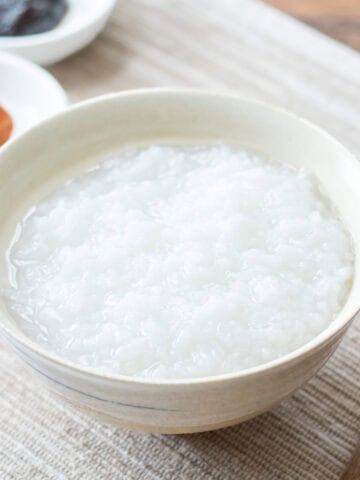
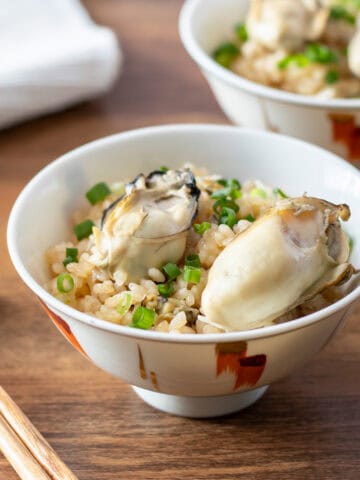
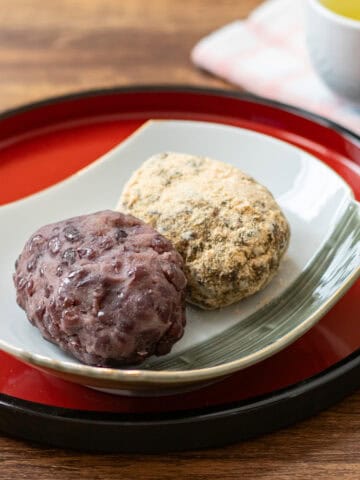
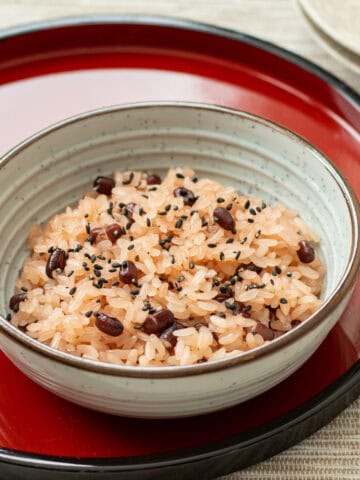
Leave a Rating and a Comment